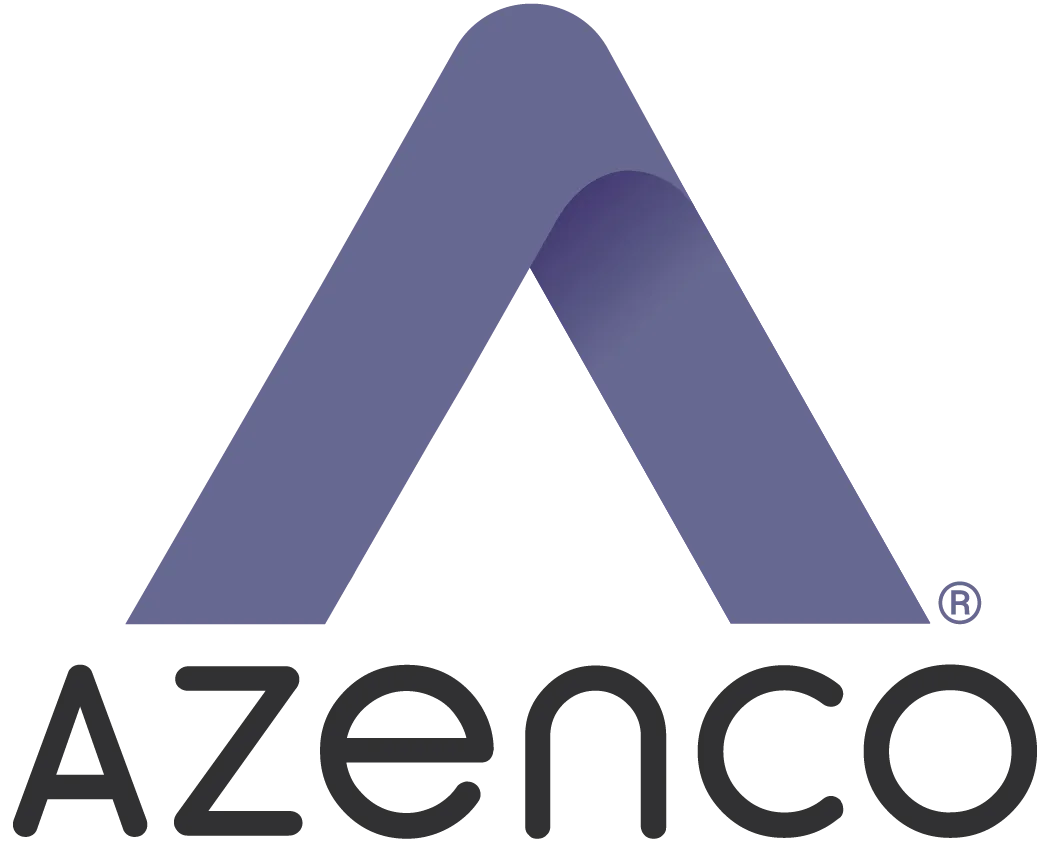A pergola permit is essential for most outdoor projects, whether you DIY or hire a contractor. DIY installation involves more labor and places all permitting responsibilities on you. Like other outdoor home improvements, pergola projects must comply with state, county, and municipal regulations, including zoning laws, building and fire codes, and historical district guidelines. Most areas require a building permit and approval of your plans before construction begins.

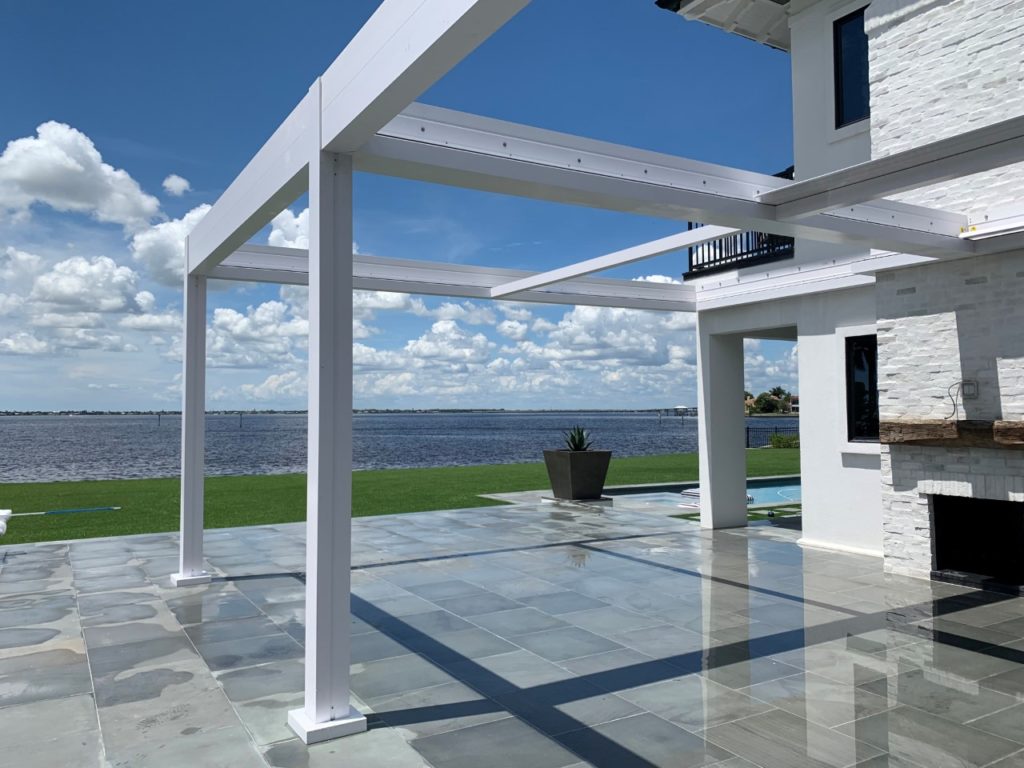

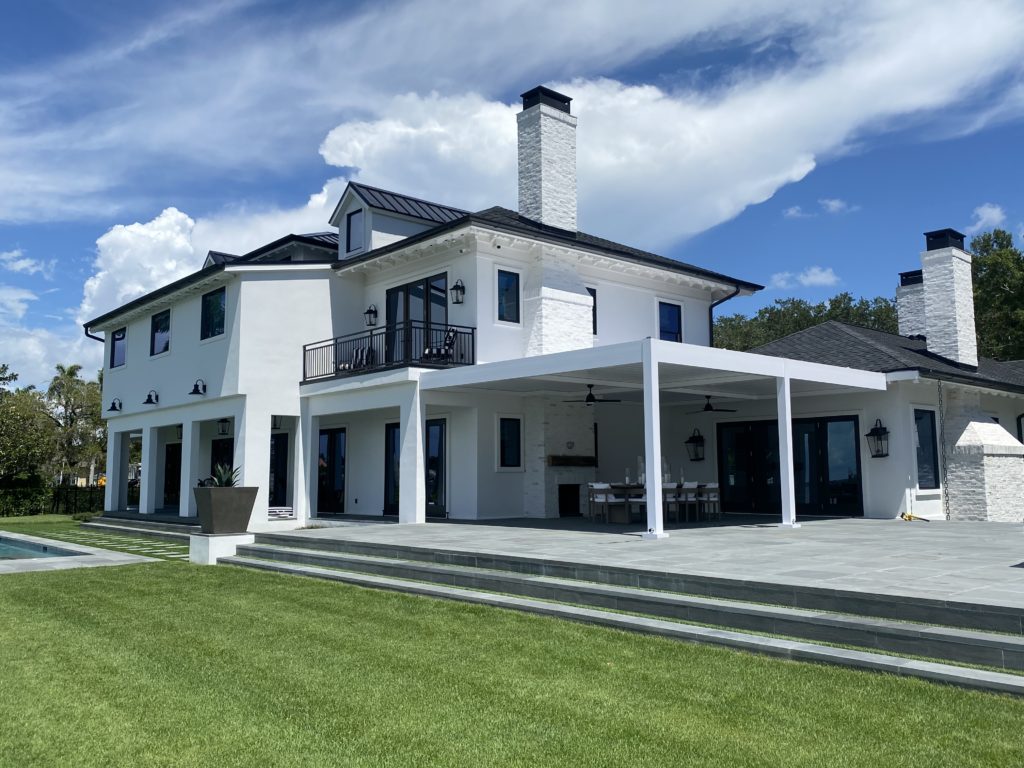
Planning your pergola project requires careful design to complement your home’s style and meet your outdoor needs. Local building codes and permitting requirements, which vary by location, often require engineer-approved plans. In some cases, separate structural and electrical permits may be necessary.
For coastal areas, designs may need to meet high wind-resistance standards, while historic neighborhoods may impose aesthetic guidelines. Understanding these regulations early is key.
If you decide to hire the right contractor, they can guide you through permitting requirements and often handle the process for you. Additionally, check your homeowner’s association bylaws to ensure compliance with property rules.
what happens if you build a pergola without a permit?
While it may be tempting to go ahead with the project without the correct permits, it is never advisable. Remember, the permitting process is in place for your safety, ensuring that the new construction is secure and stable and abides by building laws. Proper permitting is also a safeguard for your pergola investment. Homeowners may be subject to fines and penalties if a pergola is installed without the appropriate permits. Even worse, evading permitting requirements may force you to take the pergola down entirely at your own expense. Not to mention, you won’t have a beautiful pergola to show for your hard work, and you will have to start the project over.
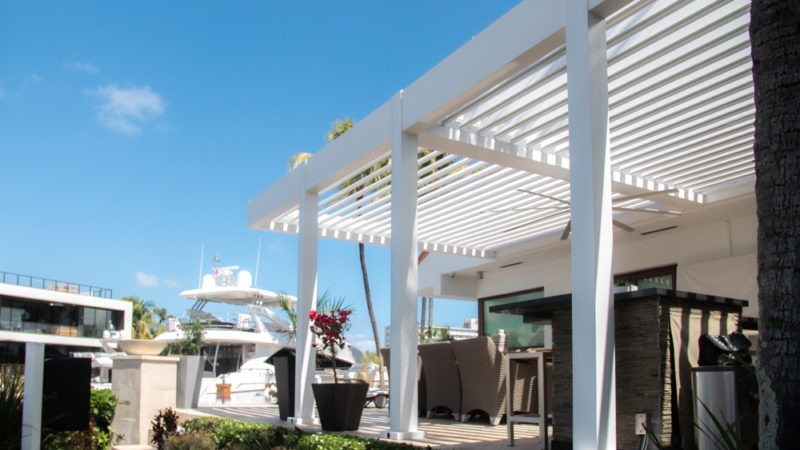
Obtaining a Planning Pergola Permit
Submit your building plans to your city, town, or county for approval by a certified engineer. Complete this step before purchasing materials or starting work. Officials review plans for zoning and structural requirements, approving or denying them. Many building officials will help you amend plans to meet local regulations. Working with a qualified pergola dealer can simplify this process. They’ll help you explore design options, create detailed “shop drawings,” and secure engineer certification before submitting plans for approval.
Pergola Permitting: State vs. County vs. City Requirements
Understanding where to find regulations is key for smooth project planning. State codes set minimum safety standards for buildings, but counties or cities may have stricter rules. Local entities can impose more stringent requirements but never less. Navigating these layers of rules is crucial to avoid delays or costly errors.
Knowing Your City or Town’s Pergola Permit Rules
Always follow the most local requirements, as they include state-level rules. If your city lacks specific codes, defer to your county or state. Local building departments usually provide checklists for approvals, including environmental or historic preservation regulations when applicable.
Remember Your HOA
Homeowner associations (HOAs) don’t establish building codes, but their rules can significantly impact your pergola project. Before starting, review your HOA’s guidelines regarding outdoor structures. These rules often dictate what types of structures are allowed and may impose restrictions on the design, size, location, materials, and even the colors you can use. Some HOAs aim to maintain a consistent aesthetic throughout the neighborhood, so your pergola may need to meet specific criteria to align with those standards. Failing to adhere to HOA rules could result in fines, project delays, or even the need to alter or remove the structure after completion.

What’s in a Building Code for a Patio Cover or Pergola?
Local building codes outline structural requirements for pergolas, including height, spacing, and foundation specifics. Many cities cap pergola height at 12 feet, though this varies by location. Codes often regulate beam spacing, post placement, foundation depth, and post diameter, particularly in areas with storm-resistant construction requirements.
Is a Soil Analysis Required to Build a Pergola?
If your pergola requires concrete footings, a soil analysis may be necessary. Soil engineers test samples to confirm the ground can support the structure. Check your state, county, or city regulations to determine if a soil test is required.
Choice of Building Materials
While wood is popular, aluminum offers durability and design flexibility. For example, pergolas manufactured by Azenco Outdoor feature high-quality aluminum with customizable powder-coated finishes that blend with any architecture. Building codes for aluminum may differ from wood, so review requirements for your chosen materials during the design phase.
Attached or Freestanding: Different Pergola Permit Requirements
Building codes dictate what is necessary to ensure a structure is correctly supported. For example, if you are installing a pergola attached to your house, the two support posts can sometimes be attached to existing concrete footings. However, for a freestanding pergola, building regulations typically require digging new concrete footings to ensure stability.
The local requirements for the depth and dimension of these footings will vary, and every project will be engineered for site-specific needs. For instance, in coastal areas susceptible to high winds, larger footers may be required beyond the specifics of the code.
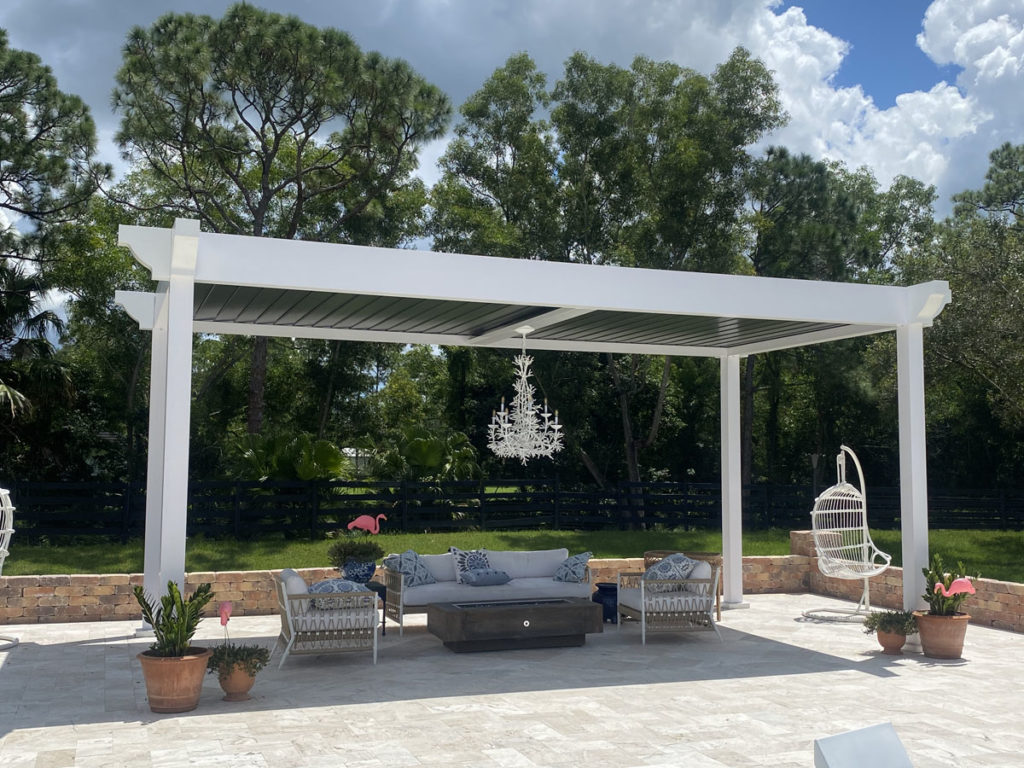
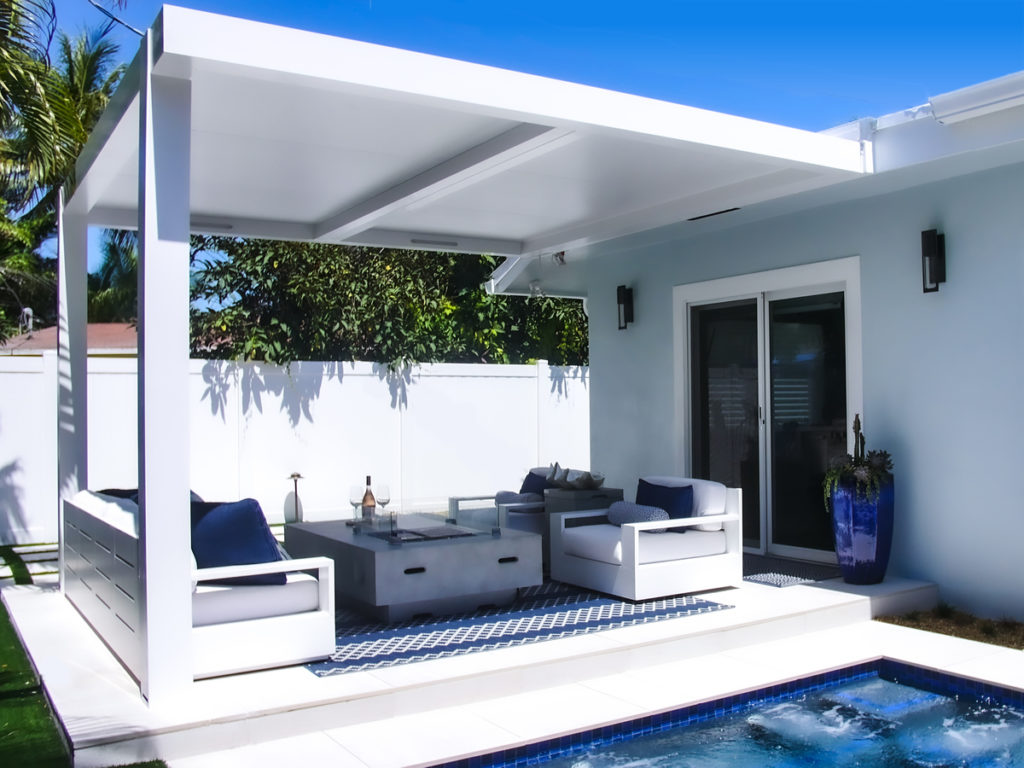

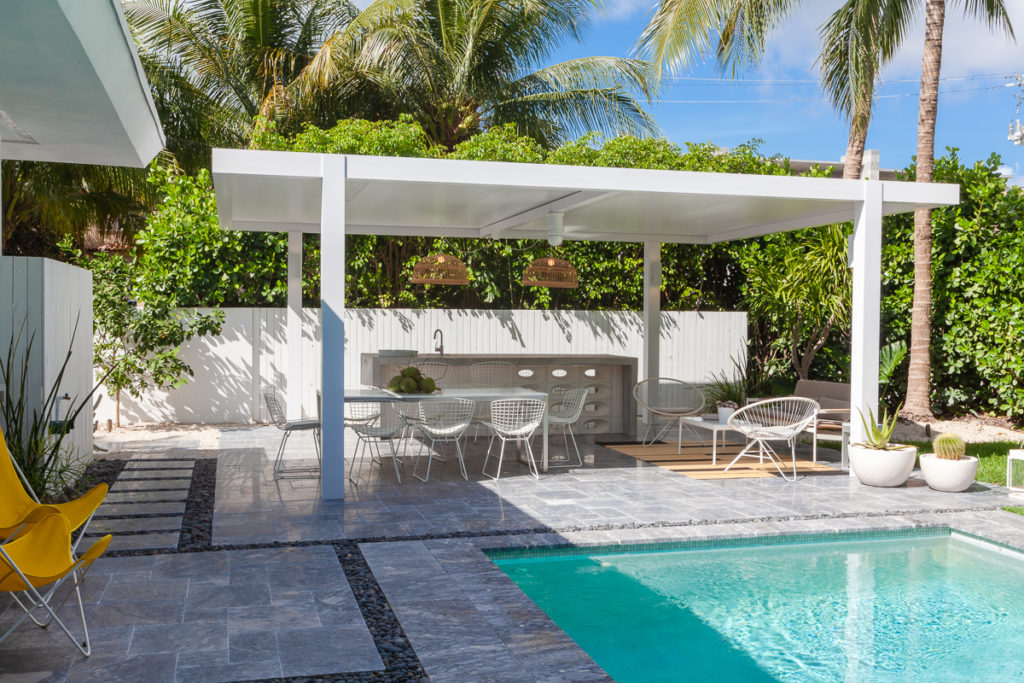
How Much Does a Pergola Permit Cost?
The cost of a pergola building permit varies widely based on location and the required levels of review. Municipalities may calculate fees based on your project’s total cost, square footage, or agency approval requirements. According to HomeGuide.com, building permit costs in the U.S. typically range from 0.50% to 2.00% of construction costs, though some areas may charge up to 10% based on local regulations.
Permit costs tend to be higher in large cities compared to smaller towns, so ask local officials about fees early in the process. If a contractor is handling your pergola installation, they’ll usually manage plan approvals and permits. These costs are often included in the project estimate, so confirm with your installer to avoid paying twice.
Are There Any Patio Coverings That Do Not Require a Permit?
Temporary structures like umbrellas and instant canopies typically don’t require permits since they aren’t permanent. However, most permanent outdoor structures, including pergolas, do require permits.
The Azenco Outdoor K-BANA™, is a customizable modular cabana. This innovative design creates flexible outdoor spaces on decks, patios, or uneven surfaces. Its self-leveling footings eliminate the need for in-ground foundations, potentially bypassing large-scale permitting.
Always check your state, county, and city building and zoning requirements before starting any outdoor project. The K-BANA™ may be an exception to permit rules in your area.

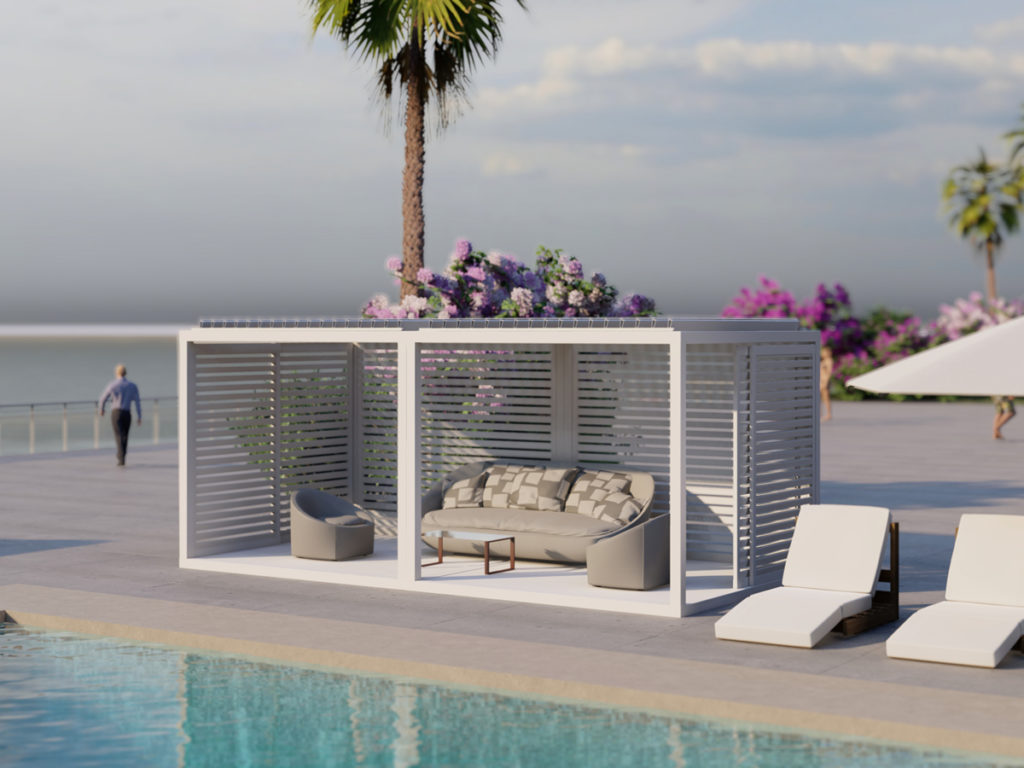
When to Hire a Contractor for Your Pergola Project
If you find researching your area’s building regulations a hassle, consider hiring a licensed contractor. A contractor will be able to help ensure your installation follows the building regulations. He will also obtain the appropriate planning and building permits. Beyond the complications of the permitting process, a qualified dealer will ensure your pergola is ideally suited to your home. For instance, they will have the experience to make sure the louvered roof opens in the ideal direction so when you open the roof you see the sun or stars rather than the wall of your home.
In Conclusion
You will require a building permit regardless of the size or type of permanent outdoor structure you are building. Safety is paramount when it comes to building any outdoor structure. By obtaining the necessary planning and building permits, you will steer clear of penalties and avoid breaking building laws.
If you are hiring someone to build your pergola, verify their license and reliability. A builder can help you create the perfect pergola design for your space, and they’ll also ensure it’s built to your permit’s specifications.
Only licensed contractors can install pergolas from Azenco Outdoor. We have a vast network of certified local dealers. Contact us today for a referral to a preferred contractor who can build the pergola of your dreams!


